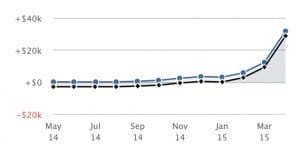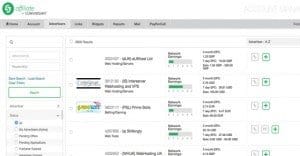How to Create Money Earning Sites with No Experience

With the shaky global economy just now on the verge of revitalization, and the era of technology in full swing, it’s no wonder that so many people want to try to make a living online. It’s something of a dream for many; sit at home, do a few hours of work each week, and have the time and money left over to live life. Books like the Four Hour Work Week reinforce this idea, even though the author knows full well only one in ten thousand actually has the right convergence of factors necessary to succeed.
The first thing you need to do if you’re looking to make money via the web is get rid of your illusions. You won’t be spending four hours a week working, not unless you have a lot of money to invest in outsourcing. Maybe you’ll get there in five or ten years, maybe you won’t. Right now, starting out, you need a lot of time and a lot of digital elbow grease. It’s not easy, making a living online. It’s even harder now, as millions of people attempt the same thing.
Step 1: Have a Goal
Before you can even begin to get to work on making a plan for making a living online, you need to have a goal. What do you want to work for? Consider making a number of goals and dividing them up temporally.
- What is your ideal five years from now?
- What do you want to be earning by the end of the year?
- What sort of monthly income are you looking to reach?
- What sort of money do you have available to invest?
Make no mistake; you’re going to have to invest money. You’re going to have at the very least some startup and advertising costs. That’s if you do everything yourself. Never mind hiring content writers or web developers, graphic designers or coders. Figure out your goals and your budget now, before you get in over your head and need to struggle to make ends meet.
Step 2: Decide on a Monetization Plan
There are a whole bunch of ways you can make money from your site. They range from easy to implement and low income, to incredibly difficult but very lucrative. Chances are, you’ll pick more than one of these options.
- CPM ads, which pay very little but only require traffic.
- CPC/CPA ads, which require convincing a user to perform some action to earn money.
- Affiliate sales, which require promoting a product to get users to buy it, earning you a commission.
- Selling content, which can range from premium memberships to selling ebooks.
- Selling products, which typically involves developing and manufacturing those products.
For a newcomer to the world of web moneymaking, it’s probably a good idea to stick to advertising or affiliate marketing.
Step 3: Create a Basic Site
Creating a site is a subject worthy its own, well, entire website discussing the topic. You have a lot of options. You can use a hosted solution like WordPress.com. You can buy cheap hosting and run a template site based on WordPress.org. You can buy better hosting and pay a developer to create a custom site. You can do anything in between.
At this point, you don’t know what the topic of your site will be. In large part, you will have to decide this based on the monetization structure you’re shooting for. If you’re making an affiliate site, pick a type of product. If you’re making a CPA site, pick a type of offer in a given industry – Dating, Insurance, Gaming, etc – and build your site around those offers.
Step 4: Populate That Site With Content
Once you have a topic, you should start to fill the site with content. This will involve landing pages as well as blog posts. You can go the cheap but time-consuming route of writing all of the content yourself, or you can pay freelancers through a site like oDesk or Textbroker to get you content to populate your site.
I recommend shooting for at least one blog update each week. I also recommend trying to come up with approximately three months worth of content as a seed to make your site look fuller and more robust. Likewise, another three months worth of content scheduled in advance gives you leeway for regular updates.
Step 5: Implement Your Monetization
Once you have a site you can implement your monetization. You won’t get the best deals or the best conversion rates starting off. In fact, as a new webmaster with a new site, many affiliate programs and CPA networks will reject you. Don’t stress about it; you can apply later with more experience under your belt and work your way up.
Step 6: Continue Producing Content
At this point, you need to keep your site alive and active while you build an audience, build a search ranking and start growing your conversions. I’m glossing over a lot, here, unfortunately. You should take the time to investigate the basics of SEO, including what is and isn’t black hat, so you know what to do to avoid being removed from various ad programs or from the organic search results.
Step 7: Track and Optimize
As your site lives and grows, you need to track through Google Analytics, well, everything. Figure out who your users are and where they’re coming from. Use this information to implement another wave of content, engineered to appeal to those users. It’s a never-ending cycle of incremental growth.
Step 8: Advertise
To get a brief but powerful influx of traffic, run PPC advertising. You can do this through Google, Facebook or another ad platform, depending on where your audience is and how much you have to spend. In general, you should budget a few dollars per day to this practice. You’ll have to experiment with ad targeting, copy and landing pages to get the best bang for your buck.
Step 9: Decide: Sell, Grow, Maintain, or Fold
Once your site is established and making some money, you need to make a decision.
Option 1 is to sell your site. Sites like Flippa allow you to sell an established site for a lump sum figure based on the monthly income of the site. Do this if your site is a sudden success, but you don’t care to maintain it or you think it’s going to collapse in the near future.
Option 2 is to continue to grow your site. This is what most webmasters do, and it involves a lot of work scaling up your efforts. Write more content, run more ads, grow more traffic, focus more on the right users, and boost your conversions.
Option 3 is to maintain your site in a holding pattern. Do the absolute minimum necessary to keep your site alive. This works best for sites running evergreen content or affiliate products, so you don’t risk as much drop-off over time.
Option 4 is to abandon the site. It’s not making money, the niche is too crowded, or you have decided making money online just isn’t for you. In these cases, cut your losses and bail.
Step 10: Repeat
That’s it. Goto:1 and repeat the whole process. With experience, you can streamline the whole thing so it takes less time, and you have connections that can help you get moving on a second site. Build a portfolio of sites and you can have numerous useful income streams.

 ContentPowered.com
ContentPowered.com





